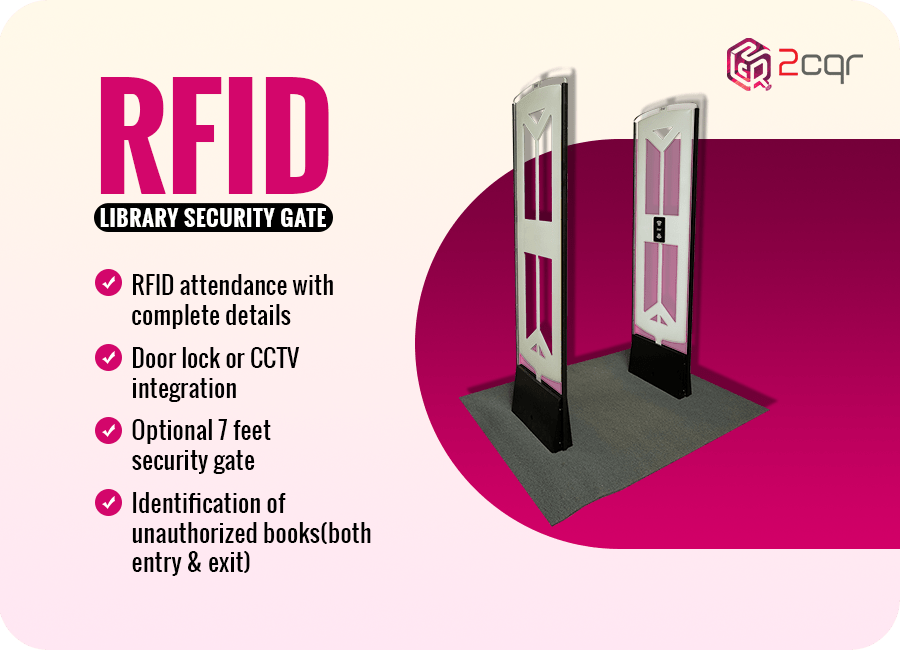
In the ever-evolving landscape of library management, RFID solutions emerge as the top technology, rewriting the narrative of efficiency and precision. The surge in global adoption of RFID technology, notably within Indian libraries, sparks curiosity and intrigue, influencing the libraries to delve deeper into its realm.
Amidst these technological advancements, a frequent question raises- does the implementation of RFID technology in Indian libraries demand special attention to specific elements?
Let’s discover the crucial elements that require the highest priority in crafting effective solutions for RFID implementation in Indian libraries.
Diverse and Huge Collection of Resources
The varieties of Indian libraries are a collection of wealth of resources steeped in the nation’s rich history, multifaceted culture, and traditions. This diverse collections comprised with epics documented in various forms, presents a challenge when it comes to efficient tracking and organization within library systems.
The need for an array of RFID tags becomes crucial to navigate this complex landscape seamlessly. Before delving into RFID implementation, the critical step lies in meticulously cataloging the diverse materials housed within these libraries. It’s a journey of discovery—identifying ancient manuscripts, regional literature, multimedia resources, and more—that forms the foundation for selecting RFID tags tailored to each material’s unique attributes. This proactive approach ensures not only compatibility but also precision in tracking, laying the groundwork for an efficient and effective RFID system within the expanse of India’s library heritage.
In this pursuit of RFID implementation, understanding the depth and breadth of materials becomes the guiding principle.
Users and Demographics
In the vibrant ecosystem of Indian libraries, the audience encompasses a diverse spectrum, from students to research scholars, each with their unique preferences and comfort levels regarding technology. The crux of successful RFID implementation lies not just in the integration of cutting-edge technology but in crafting an interface that caters to this wide-ranging audience.
Understanding the varied user behaviors and preferences becomes paramount in ensuring an inclusive and user-friendly RFID system. For many patrons, digital technology might feel unfamiliar, necessitating a thoughtful and accessible interface that fosters a seamless transition to RFID-enabled services.
A user-friendly interface serves as the bridge between traditional library practices and the innovative RFID technology. It becomes the pillar for enhancing user experience, ensuring that patrons, regardless of their technological adeptness, can navigate the system effortlessly.
Incorporating intuitive accessibility features becomes the key, offering a welcoming and accommodating environment where everyone can comfortably engage with the library resources.
Budget Constraints
In Indian libraries, financial constraints often dictate the landscape, leaving minimal room for expansive technological advancements or resource . Working within restricted budgets becomes the norm, creating a unique challenge when considering RFID implementation. The success lies in designing RFID solutions that are not only cost-effective but also easy to comprehend and implement within these limitations. The key imperative becomes crafting solutions that optimise resources, providing maximum value while ensuring simplicity in adoption and operation.
The significance of cost-effective and user-friendly solutions cannot be overstated in the context of Indian libraries. Striking a delicate balance between innovation and practicality becomes paramount. Moreover, these solutions should offer scalability, allowing libraries to expand and evolve gradually without incurring exorbitant costs or drastic overhauls.
Different Infrastructure
In the case of India’s diverse landscapes, the variances in environmental conditions, topography, and infrastructure pose a unique challenge in RFID implementation within libraries. The success of RFID solutions hinges not just on meeting the basic requisites of libraries but also on the expertise to navigate the intricacies of these varied landscapes.
Specialised expertise becomes indispensable in crafting RFID solutions tailored for Indian libraries, requiring a deep understanding not only of the libraries’ needs but also of the potential challenges stemming from environmental variations. This expertise extends to evaluating and selecting equipment adept at delivering optimal results in diverse conditions
From rural to urban areas, considering factors like internet availability and varying infrastructural capabilities choosing the additional features like data capturing, access control wisely is most important
Maintenance stands as a pivotal concern within this multifaceted landscape. The diverse environmental conditions necessitate equipment that can withstand and perform reliably in different scenarios. Moreover, the disparity in infrastructure across regions demands solutions that are not just effective but also low-maintenance, ensuring sustainability and longevity.
Conclusion:
In the kaleidoscope of India’s library landscape, the key success of implementation of RFID technology lies in a delicate balance – optimising technology while respecting the uniqueness of each library’s environment and ensuring simplicity, cost-effectiveness, and scalability. As Indian libraries embrace RFID, these considerations become the guiding principles for a seamless transition, offering a technological leap that respects the nation’s rich heritage and varied demographics.


